A healing garden in West Texas
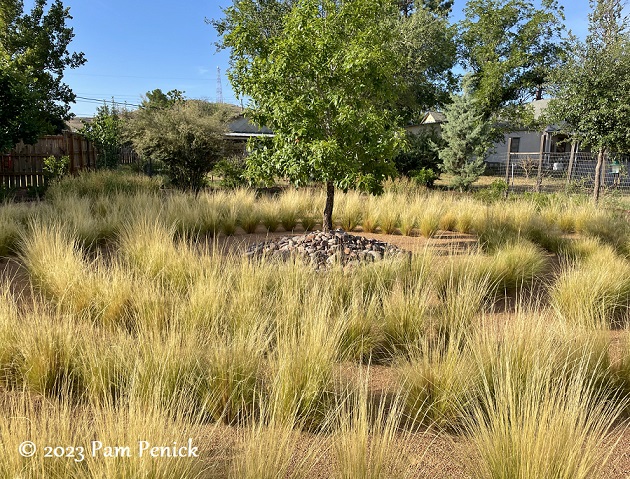
A week ago I had the pleasure of visiting a lovely garden in Alpine, located in far West Texas, 400 miles west of Austin. Owner Susan Wallens showed me around and told me how the garden came to be.
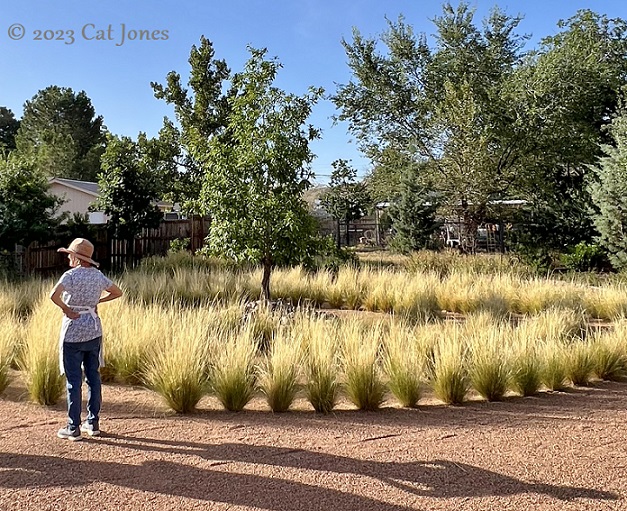
Susan’s husband, Mike, is the vicar of St. Paul’s Episcopal Church in Marfa and serves four other churches in the Big Bend Region. A few years ago they hired designer Michael Eason (author of Wildflowers of Texas) to turn the expansive backyard behind their home into a garden for spiritual healing and outreach in the community.
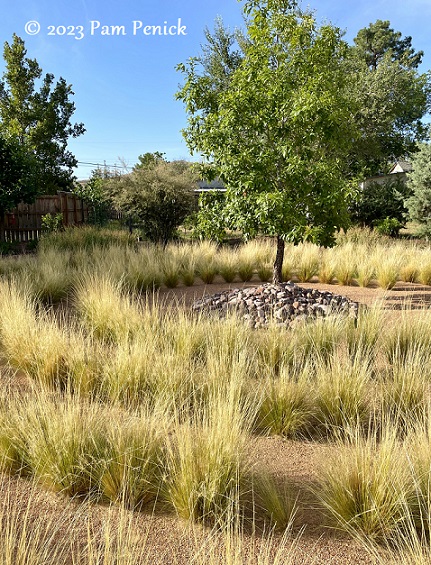
The heart of the garden is a labyrinth of precisely laid out Mexican feathergrass spiraling around a loquat leaf oak (Quercus rysophylla) planted high in the center. It’s a wow moment, soft and beautiful and waving with tawny native grasses. I asked if the feathergrass, which likes to seed itself around, was hard to keep in line. But Susan’s gardener, Ben, told me it’s not too difficult.
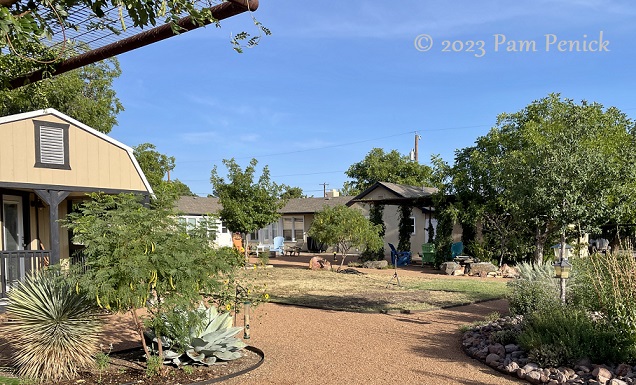
Father Mike meets parishioners for counseling in a detached office behind their home.
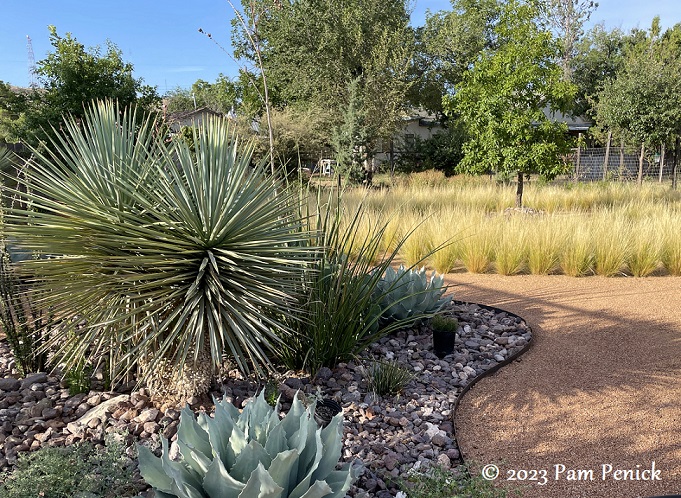
The garden, Susan told me, was designed to be a place of solace and healing for visitors, with flowering plants that attract birds and butterflies, the labyrinth for clearing one’s mind, and a large arbor for outdoor gatherings.
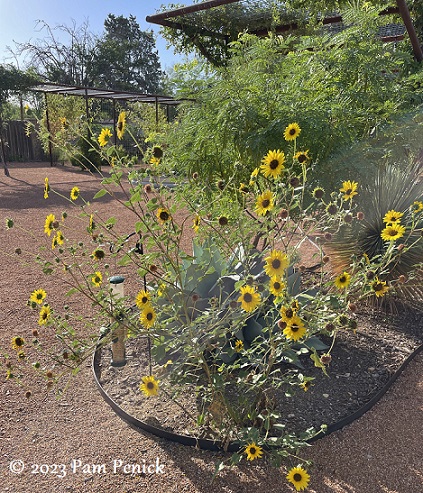
Sunflowers readying their feast of seeds for birds
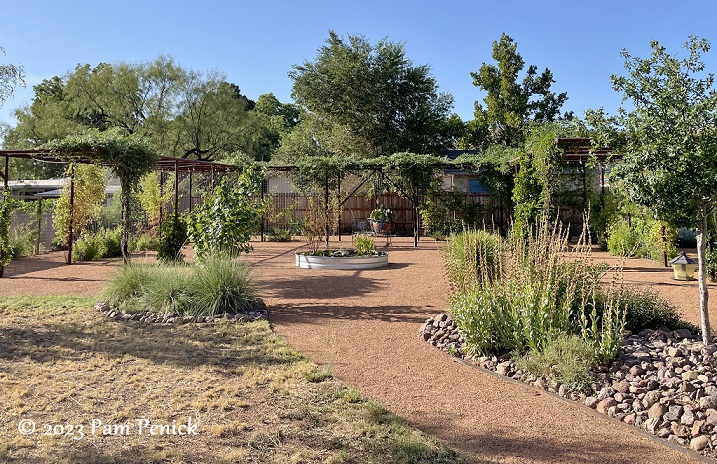
The other main focal point of the garden is a long, U-shaped arbor made of steel pipe and fencing mesh, which wraps around a half-sunken stock-tank pond and spacious gravel patio.
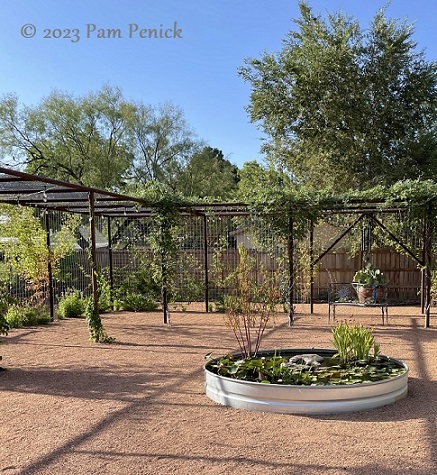
Can’t you imagine happy gatherings here under the stars on a cool desert evening?
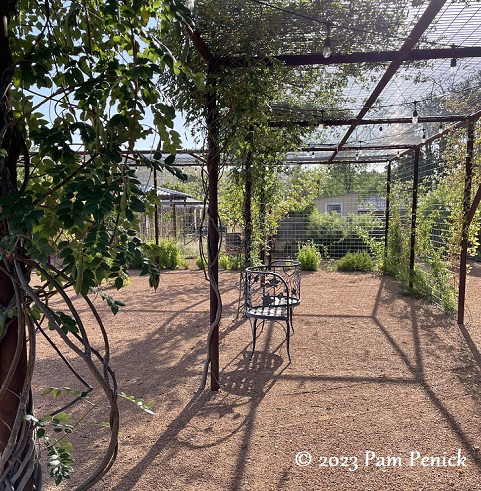
Michael chose several species of vines to clamber up the arbor and, eventually, provide a tunnel of shade.
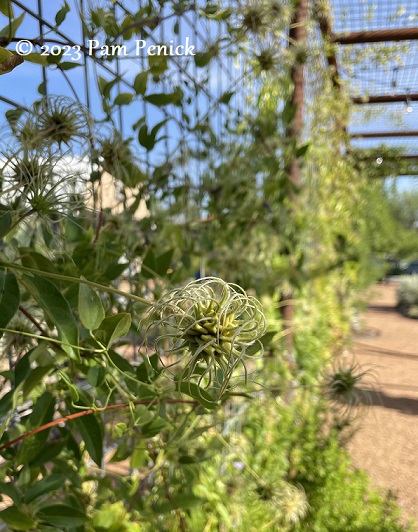
Clematis seedhead
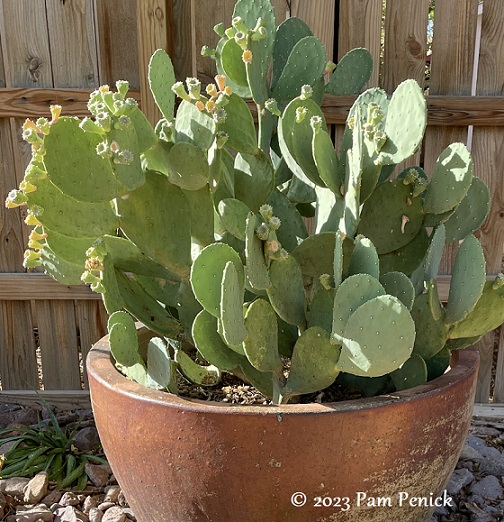
A potted prickly pear makes a simple focal point at the end of one sightline.
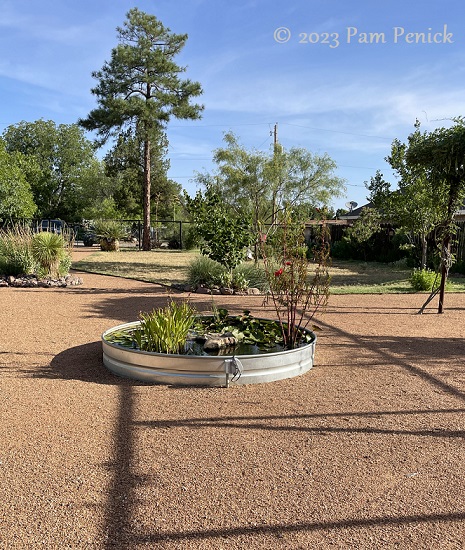
The pond must be quite the oasis for birds, bees, and other wildlife in this beautiful desert garden. And what better reason to create a garden than to share its healing properties with others. Thank you, Susan and Mike, for sharing it with me!
Up next: A visit to artist Julie Speed’s studio and patio garden in Marfa. For a look back at masses of flowering sotols in Marfa, click here.
__________________________
Digging Deeper
Come learn about gardening and design at Garden Spark! I organize in-person talks by inspiring designers, landscape architects, authors, and gardeners a few times a year in Austin. These are limited-attendance events that sell out quickly, so join the Garden Spark email list to be notified in advance; simply click this link and ask to be added. Season 8 kicks off in fall 2024. Stay tuned for more info!
All material © 2025 by Pam Penick for Digging. Unauthorized reproduction prohibited.


That labyrinth may be the best use of Mexican feathergrass I’ve ever seen.
Isn’t it good? I really liked it.
Where once was a small putt-putt course, huge putting net and a greenhouse made of mostly broken windows now stands an oasis! So much hard work and love have been poured into this space that it has become quite the sanctuary for not only the birds, bees and butterflies, but for weary travelers, nature lovers and star gazers.
We love you, Mom and Dad!
Aw, that’s a great tribute from someone who’s clearly seen the garden come to life from beginning to now. Thanks for sharing its origin story!
What type of gravel was used? Most of what I see locally is too large or too small. Do you have a gravel recommendation for a garden like this? Thank you.
I’m afraid I don’t know what was used, Candace.
Absolutely inspiring and your photos definitely convey the feelings of solace and peace.
Thank you, Marcy. It’s a beautiful garden.
Gosh how beautiful! Thank you so much for sharing such a gorgeous garden. I’ve been looking for more desert gardening inspiration given our last 2 summers here in Austin. I was so glad to see this one. Question: I remember on a post you talked about losing some of your mature trees because they were buried in mulch and you didn’t realize it until it was too late…that the root flare of a tree should show and look like an elephant’s foot, etc for tree health. I cringed at seeing that pile of rocks all the way up the tree trunk at the center of the Mexican feather labyrinth. Not to mention that rocks can bake the roots of the tree with their heat and zap much needed water from the tree. Any ideas of why the designer did that??
Camille, I’m glad you enjoyed the post. I reached out to Michael Eason, the designer, for comment re: the labyrinth tree. He replied, “It is not a pile of rocks. It is a top dressing. The tree was planted higher than the surrounding terrain. The central tree in the meditation garden is making a visual statement.” He disagrees with the idea that rocks can bake the roots of a tree or zap water from the soil. He says that rocks provide insulation and prevent water loss.
Thank you for investigating and replying to me. I enjoy your work so much! Thank you for being you!
You’re welcome, Camille, and thank YOU for taking the time to read my blog and ask questions!